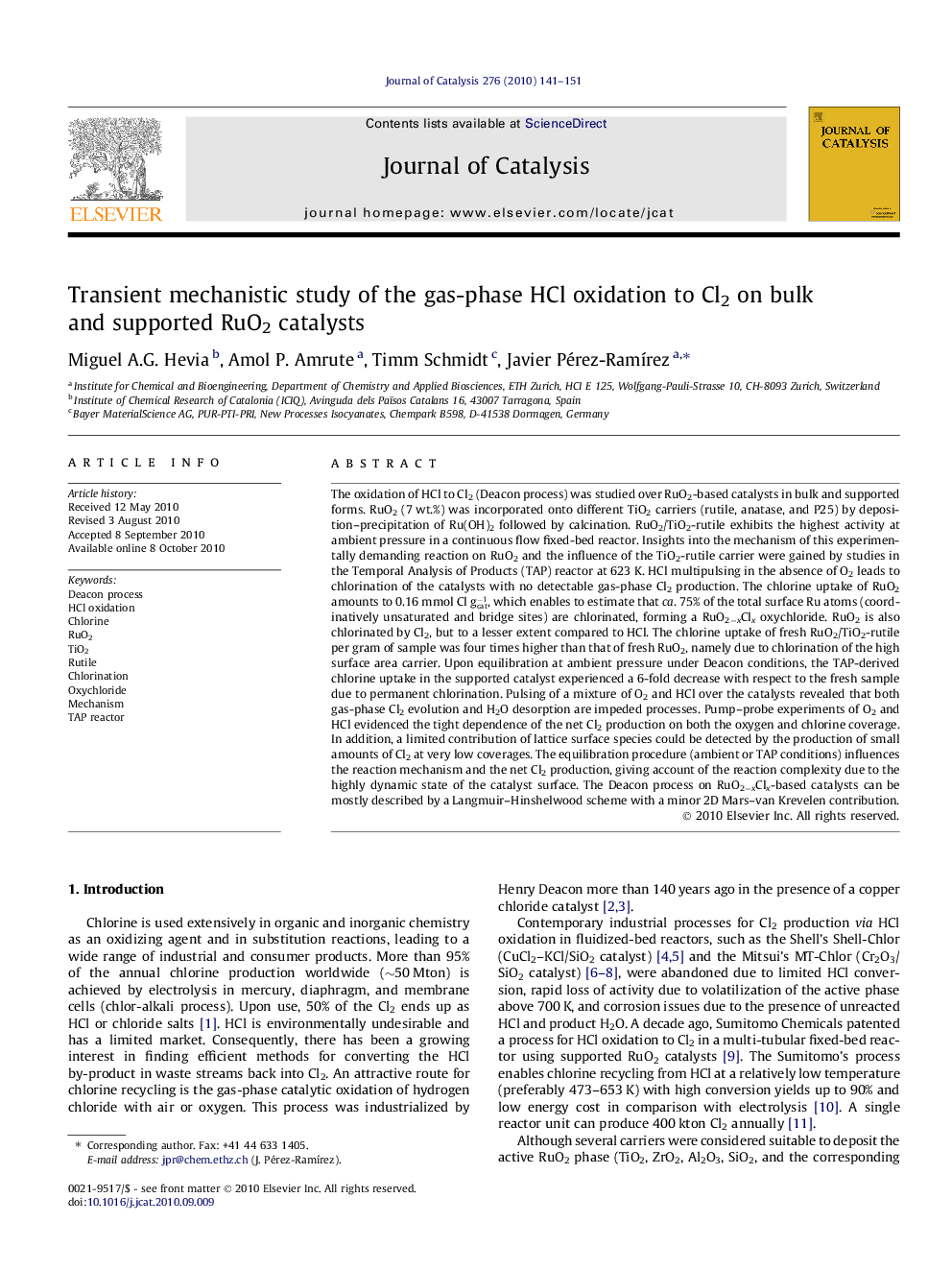| کد مقاله | کد نشریه | سال انتشار | مقاله انگلیسی | نسخه تمام متن |
|---|---|---|---|---|
| 62064 | 47619 | 2010 | 11 صفحه PDF | دانلود رایگان |

The oxidation of HCl to Cl2 (Deacon process) was studied over RuO2-based catalysts in bulk and supported forms. RuO2 (7 wt.%) was incorporated onto different TiO2 carriers (rutile, anatase, and P25) by deposition–precipitation of Ru(OH)2 followed by calcination. RuO2/TiO2-rutile exhibits the highest activity at ambient pressure in a continuous flow fixed-bed reactor. Insights into the mechanism of this experimentally demanding reaction on RuO2 and the influence of the TiO2-rutile carrier were gained by studies in the Temporal Analysis of Products (TAP) reactor at 623 K. HCl multipulsing in the absence of O2 leads to chlorination of the catalysts with no detectable gas-phase Cl2 production. The chlorine uptake of RuO2 amounts to 0.16 mmol Cl gcat-1, which enables to estimate that ca. 75% of the total surface Ru atoms (coordinatively unsaturated and bridge sites) are chlorinated, forming a RuO2−xClx oxychloride. RuO2 is also chlorinated by Cl2, but to a lesser extent compared to HCl. The chlorine uptake of fresh RuO2/TiO2-rutile per gram of sample was four times higher than that of fresh RuO2, namely due to chlorination of the high surface area carrier. Upon equilibration at ambient pressure under Deacon conditions, the TAP-derived chlorine uptake in the supported catalyst experienced a 6-fold decrease with respect to the fresh sample due to permanent chlorination. Pulsing of a mixture of O2 and HCl over the catalysts revealed that both gas-phase Cl2 evolution and H2O desorption are impeded processes. Pump–probe experiments of O2 and HCl evidenced the tight dependence of the net Cl2 production on both the oxygen and chlorine coverage. In addition, a limited contribution of lattice surface species could be detected by the production of small amounts of Cl2 at very low coverages. The equilibration procedure (ambient or TAP conditions) influences the reaction mechanism and the net Cl2 production, giving account of the reaction complexity due to the highly dynamic state of the catalyst surface. The Deacon process on RuO2−xClx-based catalysts can be mostly described by a Langmuir–Hinshelwood scheme with a minor 2D Mars–van Krevelen contribution.
Temporal Analysis of Products (TAP) reactor studies improve the mechanistic understanding of the gas-phase HCl oxidation to Cl2 (Deacon process) over RuO2-based catalysts.Figure optionsDownload high-quality image (69 K)Download as PowerPoint slide
Journal: Journal of Catalysis - Volume 276, Issue 1, 19 November 2010, Pages 141–151